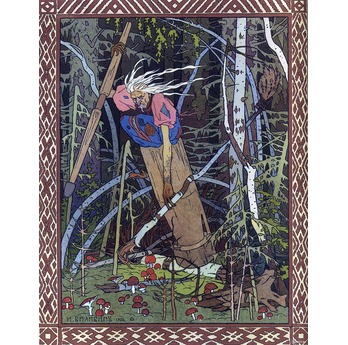This program will be recorded and made available publicly on our YouTube channel.
You do not need to have registered to view the video.
Baba Yaga, an archetypal figure from Slavic folklore and fairy tales, can be many widely different things: a dark goddess, a witch, a wise woman.
Baba Yaga represents an archetypal energy that intersects and interacts with the outer world as an intervention from the unconscious, bringing a new energy and change.
An encounter with an archetypal figure can be terrifying and fateful. As such a figure, Baba Yaga is frightening and powerful.
Baba Yaga is a hand of fate – she judges, she discerns. A confrontation with Baba Yaga ends in death or life. For the “right” protagonists she is helpful – based on what she sees in their heart.
Kornelia Grabinska, PhD, is a psychologist and a Jungian analyst working in private practice in Fairbanks, Alaska. Born and raised in Poland, she obtained her analytic training from the Research and Training Centre for Depth Psychology according to C.G. Jung and Marie Louise von Franz in Switzerland. She has written and presented on various Jungian topics, including the interpretation of selected Inuit folktales, the symbolism of death in selected fairy tales, the psychological meaning represented by alchemical stages, and the importance of communication from the unconscious contained in dreams. She was instrumental in founding a CG Jung Society of Northern Alaska more than a decade ago. The society hosts a biennial Jungian Midnight Sun Conference and promotes Jungian ideas through lectures and workshops.
Learning objectives:
- Identify the psychological aspects that the archetypal figure of Baba Yaga represents.
- Explain how those aspects can manifest in the outer life.
- Learn how the archetypal figure of Baba Yaga could be helpful in contemporary lives.
Image by Ivan Bilibin, from Vasilisa the Beautiful and the Baba Yaga

